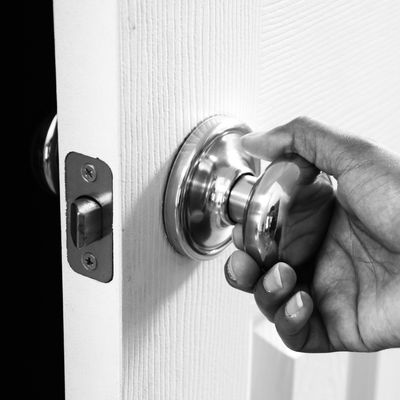
One of the most terrifying things about the coronavirus is how rapidly, and seemingly easily, it can spread. Experts are still learning about how the virus is transmitted, but according to the CDC, it’s believed that it spreads primarily when people are in close physical contact with each other, through respiratory droplets that are produced when an infected person coughs, sneezes or talks. However, there are also reports that the coronavirus can live on surfaces for days.
As we near the end of May, more than 100,000 people in the U.S. have died from COVID-19. We’ve been told to stay at least six feet away from people outside our households, wear face masks in public settings, wash our hands, clean high-touch surfaces, and avoid touching our faces.
But if the virus can live on surfaces (and research indicates it can), does that mean you also need to be disinfecting everything you buy at the grocery store? Is it safe to order packages online? Here’s what we know so far.
How long can the coronavirus live on plastic, cardboard, and other surfaces?
It depends on the surface. A study published in March in The New England Journal of Medicine found that the virus could survive for the longest — up to three days — on nonporous surfaces like plastic and steel. However, researchers also found that the virus’s ability to infect dropped sharply in this time.
The study found that the virus couldn’t survive as long on cardboard, a more porous surface, where it disintegrated over the course of a day.
However, there’s still a lot that researchers don’t know. Another study released in March by the CDC found that the coronavirus survived for up to 17 days on some surfaces aboard the Diamond Princess cruise ship, which experienced a COVID-19 outbreak this year. However, it’s not clear whether the virus detected was still viable. The CDC said that researchers couldn’t “determine whether transmission occurred from contaminated surfaces,” and that further research was needed.
How likely are you to get infected from touching a contaminated surface?
Right now, experts say that the risk of getting infected from touching a contaminated surface is low. For a surface that you touch — like a can of food at the grocery store, or a package from Amazon — to be contaminated with the virus, it would have to have been recently handled by someone who is sick.
And so far, there’s not much evidence that people have become infected from touching a contaminated surface. According to the CDC, experts believe that the main way the coronavirus spreads is person-to-person, through respiratory droplets. The latest guidance from the CDC states: “It may be possible that a person can get COVID-19 by touching a surface or object that has the virus on it and then touching their own mouth, nose, or possibly their eyes. This is not thought to be the main way the virus spreads, but we are still learning more about how the virus spreads.”
Similarly, “Everything at the grocery store and restaurant containers and bags could in theory have infectious virus on them,” Dr. Linsey Marr, an expert in the transmission of viruses by aerosol at Virginia Tech, told the New York Times. “We could go crazy discussing these ‘what-ifs’ because everyone is a potential source, so we have to focus on the biggest risks.”
If you’re concerned that you may have touched a contaminated surface, Marr recommends cleaning the item with disinfecting wipes and washing your hands.
Is the virus airborne?
There’s been some debate among experts about whether the coronavirus is airborne. The World Health Organization had initially said that the virus could not travel through the air, but recent research indicates that it can stay suspended in the air for about 30 minutes (before settling on surfaces).
Researchers believe that the virus disperses quickly in the air, meaning that it doesn’t linger at high enough levels to pose a risk to most people who are not physically close to an infected person. However, these findings have implications for people who are in close contact with someone who is sick, including health-care workers and family members, and experts say that more research is needed.
Additionally, a study published in May found that simply talking — as opposed to coughing or sneezing — can launch thousands of droplets into the air, where they can float for up to 14 minutes. The study’s authors wrote that “there is a substantial probability that normal speaking causes airborne virus transmission in confined environments.” The findings underscore the importance of wearing a mask and staying six feet away from others, especially when indoors or in areas with poor ventilation.
The CDC has recommended that people wear cloth masks when in public settings where it may be difficult to stay six feet away from other people, such as grocery stores and pharmacies. According to the CDC, the guidance is intended to help prevent those who are infected but asymptomatic (or people who don’t realize they’re sick) from spreading the virus.
Is it safe to order packages online?
Researchers have found that the coronavirus disintegrates on cardboard within 24 hours, and the CDC has said that the risk of the virus being transmitted via packages is low. However, it’s still a good idea to dispose of any packaging, and then wash your hands.
What about grocery shopping or getting food delivered?
According to the CDC, there’s currently no evidence that COVID-19 transmission is associated with food. In general, cooking kills the virus, but it’s recommended that you wash any raw fruits and vegetables thoroughly before eating. Experts are also advising that people limit their trips to the store, buying enough food to last a week, if possible.
If you’re worried about coming in contact with potentially infected surfaces, it’s always a good idea to wash your hands — especially before eating, preparing food, or touching your face. And right now, there’s no harm in being extra cautious, especially if you live in an area experiencing an outbreak.
This post has been updated.
We’re committed to keeping our readers informed.
We’ve removed our paywall from essential coronavirus news stories. Become a subscriber to support our journalists. Subscribe now.


